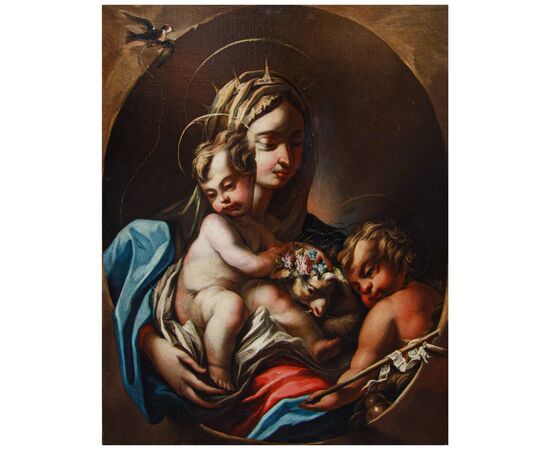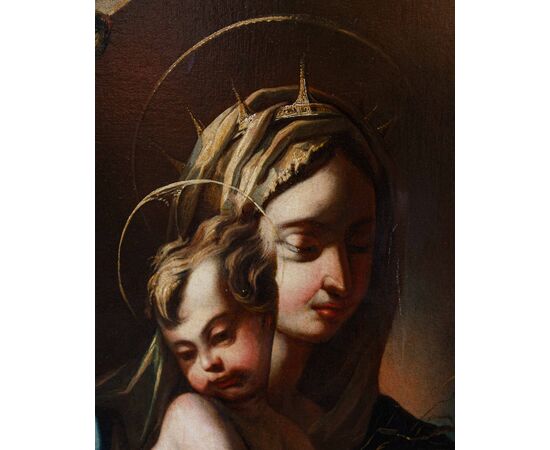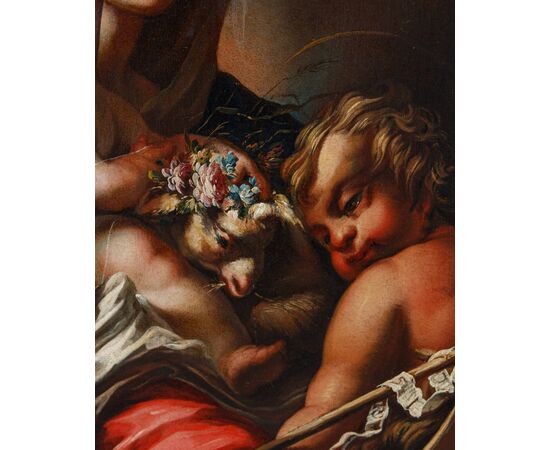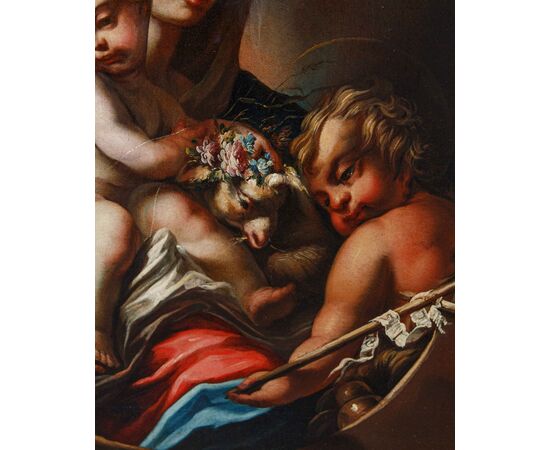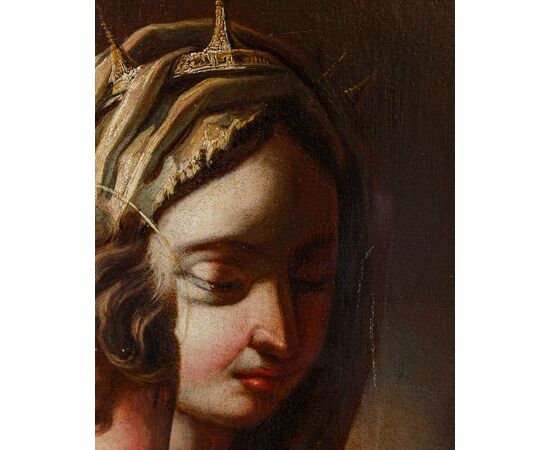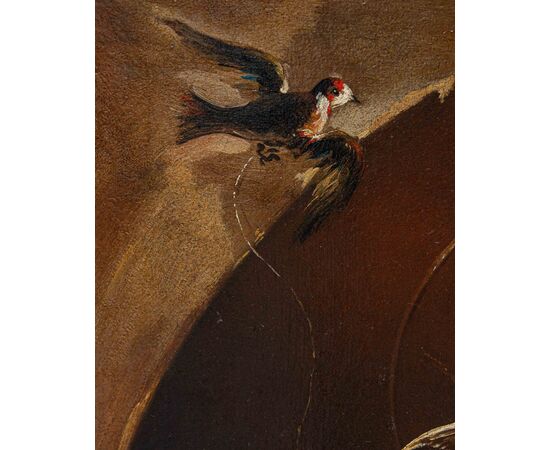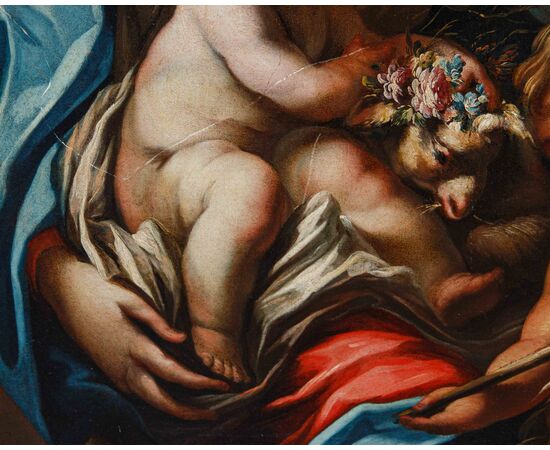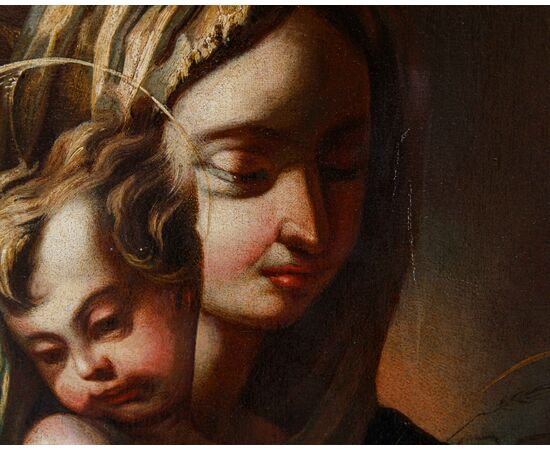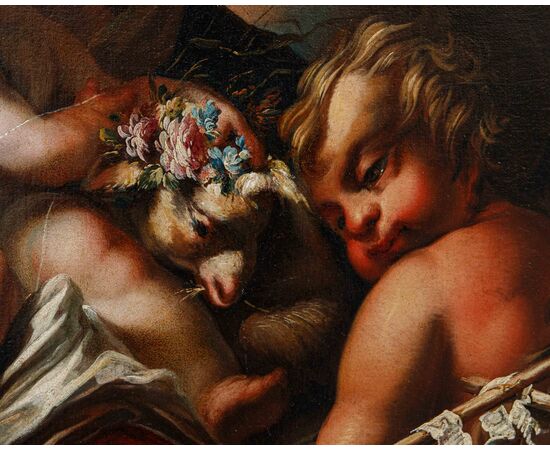Genoese School, 17th century, Madonna with Child, Saint John and Goldfinch
Genoese School, 17th century
Madonna with Child, Saint John and Goldfinch
Oil on canvas, 97.5 x 73 cm
The Genoese school of the 17th century was able to excellently capture the emotions and intimacy of religion. Supporters of an innovative academicism, free from any classicism but ready, despite the dictates of the Counter-Reformation, to internalize the most recondite mysticism through colors, the Genoese became a school thanks to the city's historical opening of the port to the international market. After the French dominance over the city in the time of Andrea Doria, the new pro-Spanish turn allowed Genoa to place itself among the main European artistic centers.
After the mannerisms of foreign painters hosted by Doria, denounced by the brushes of Domenico Beccafumi and Pordenone, the new Flemish figurativisms accompanied Genoese painting with lively forcefulness, delivering it to the embrace of the Baroque. It is no coincidence that the champion at the turn of the seventeenth century was the eclectic Bernardo Strozzi, who had been in the workshop of the Sienese Sorri.
In the present painting, the Madonna, supporting the Child and in the company of the young Baptist, stands within an oval, illusionistically escaping from it through a soft fold of the mantle. The group portrayed symbolically and concretely becomes inflamed: the ardor of divine love shines through the rounded bodies and reddish joints of those portrayed, from the elongated eyes like the strands of hair that tremble in the air and the color of wheat. Even the light slips on the silky garments of the Virgin, reflecting dazzling light. Delicate as a hair, the cord that holds the Child restrains the happy flutter of the goldfinch's wings, a symbol of the future Passion of Christ: medieval tradition wanted a goldfinch, in an attempt to extract the thorns from Jesus's crown of thorns, to have been stained with His blood. Even the sweet lamb surrounded by a crown of flowers, tenderly intent on chewing one, is a living Christian symbol of sacrifice and Resurrection.
The painting encapsulates the main distinctive features of the triumphant Genoese school. If on the one hand it is possible to understand a luminism à la Valerio Castello (1642-1659), on the other hand the formalism typical of Giovanni Battista Paggi is tempered in the containment of emotions, manifested with modest modesty by those present. It is possible to compare it, except for the constructed backgrounds of Paggi, the small faces of the children, as happens in Cupid of Rinaldo and Armida and in Jesus and the little angels of the Mystical Marriage of Saint Catherine or in the Madonna with Child, Saint John and Saint Stephen who receives the palm of martyrdom, all in private collection. Bartolomeo Guidobono (1654-1709) will collect this tradition, luministically tempering the rendering of his canvases, caressed by a darkness equal to the present one, which delicately highlights the complexions of the characters: this happens in the Maga in a private collection.

